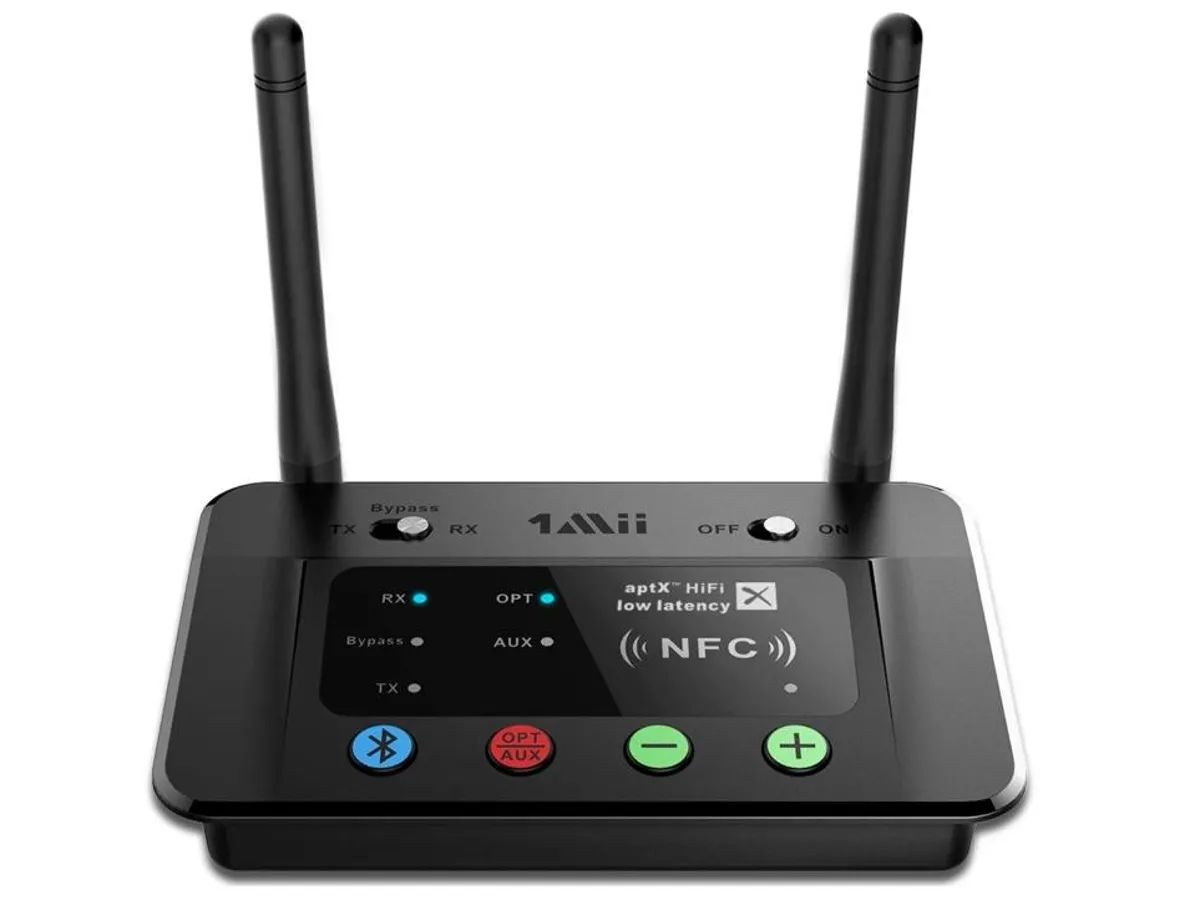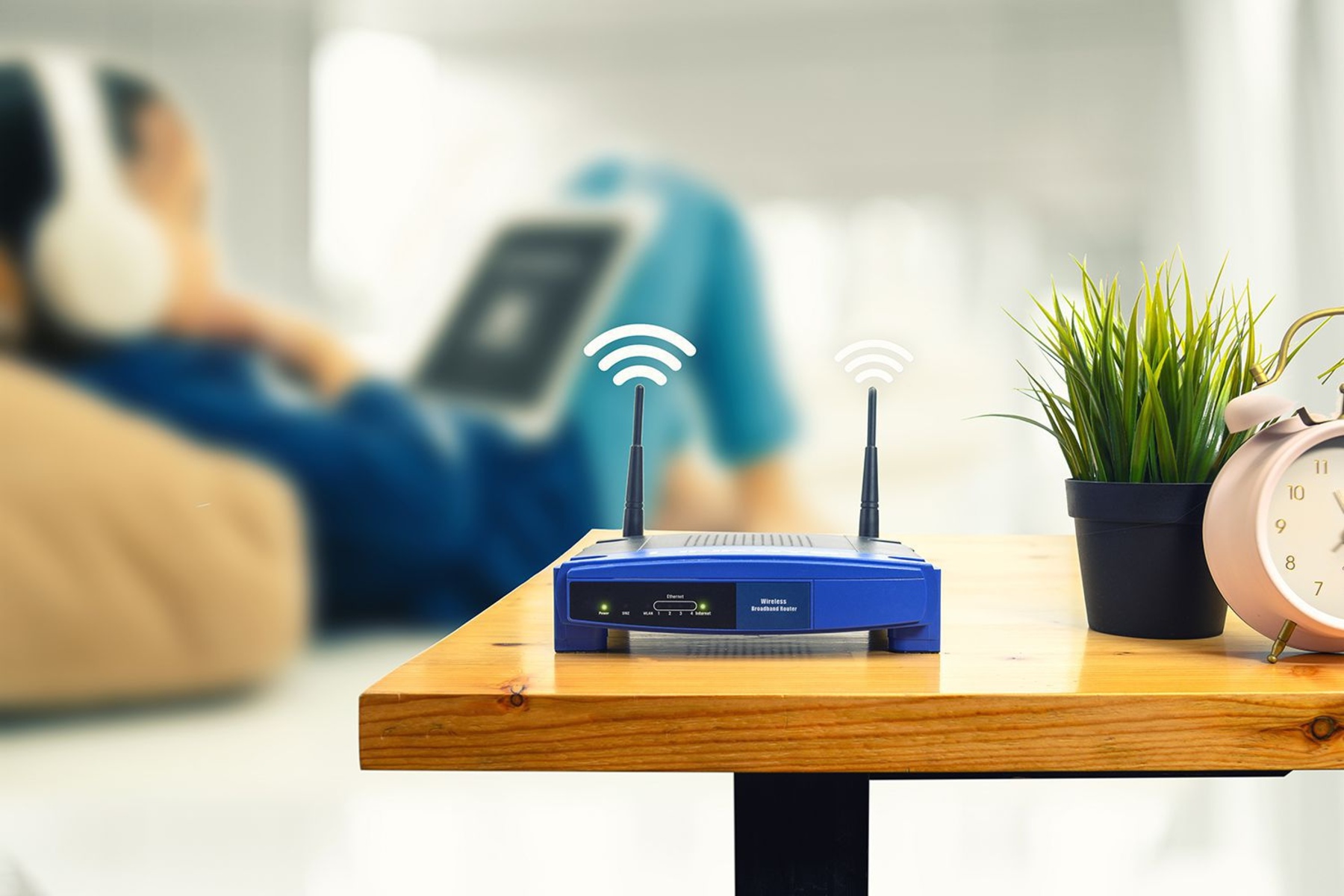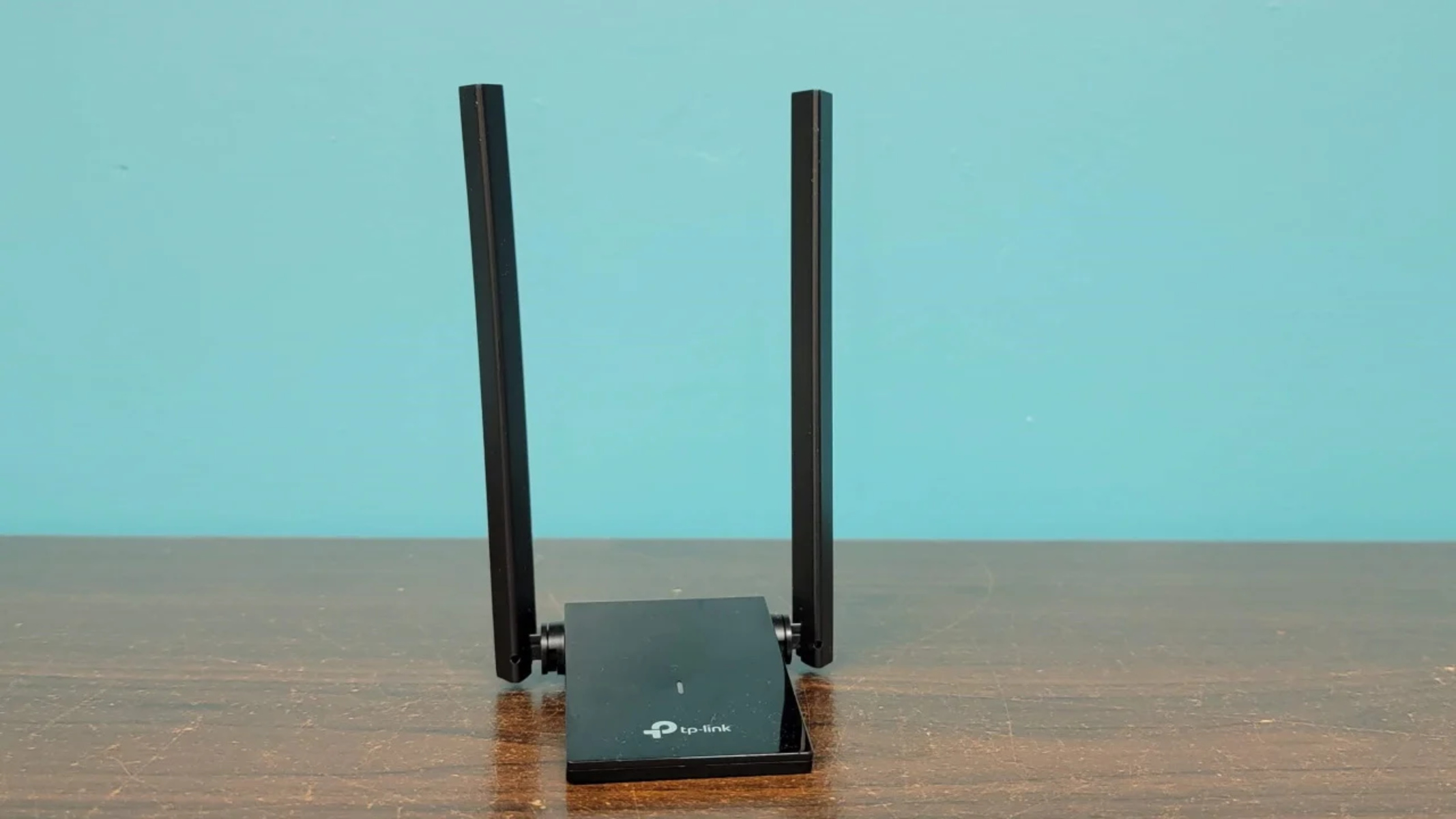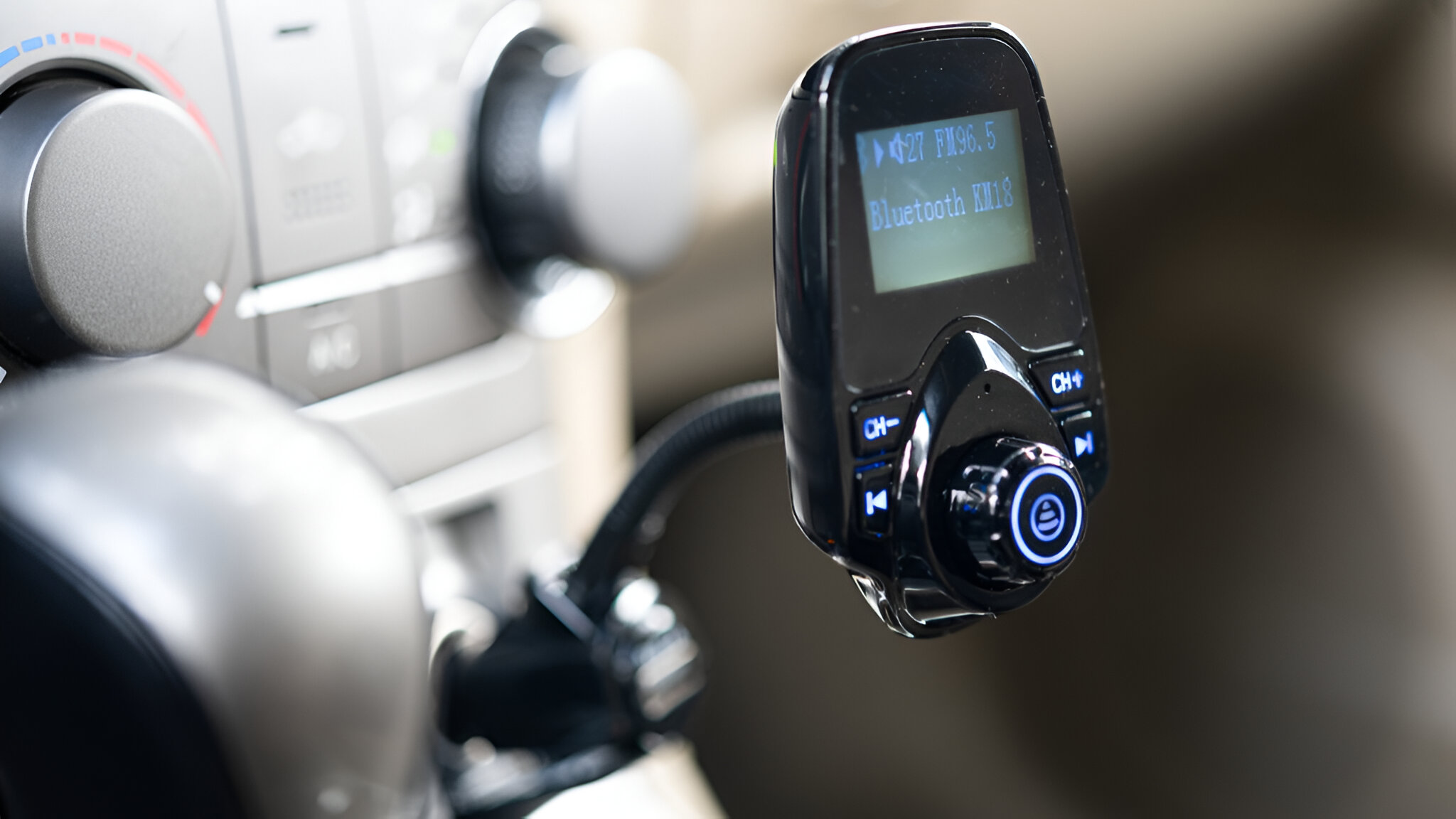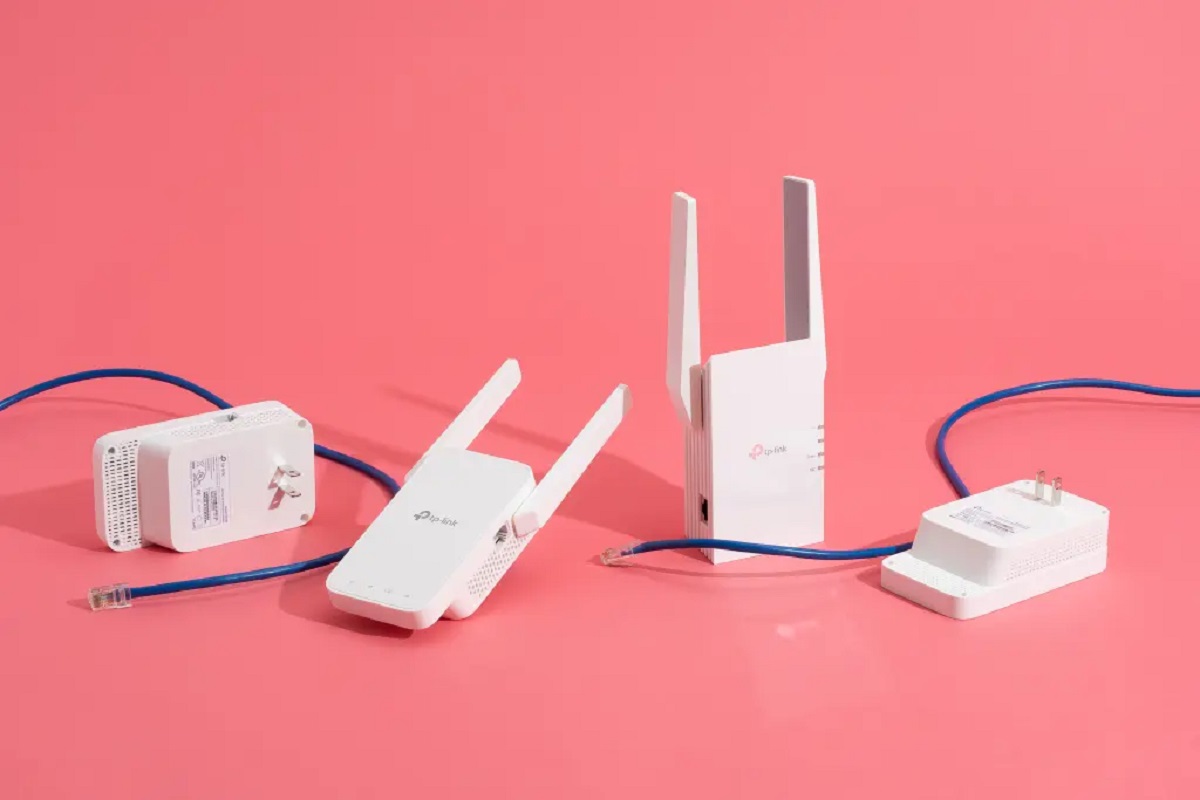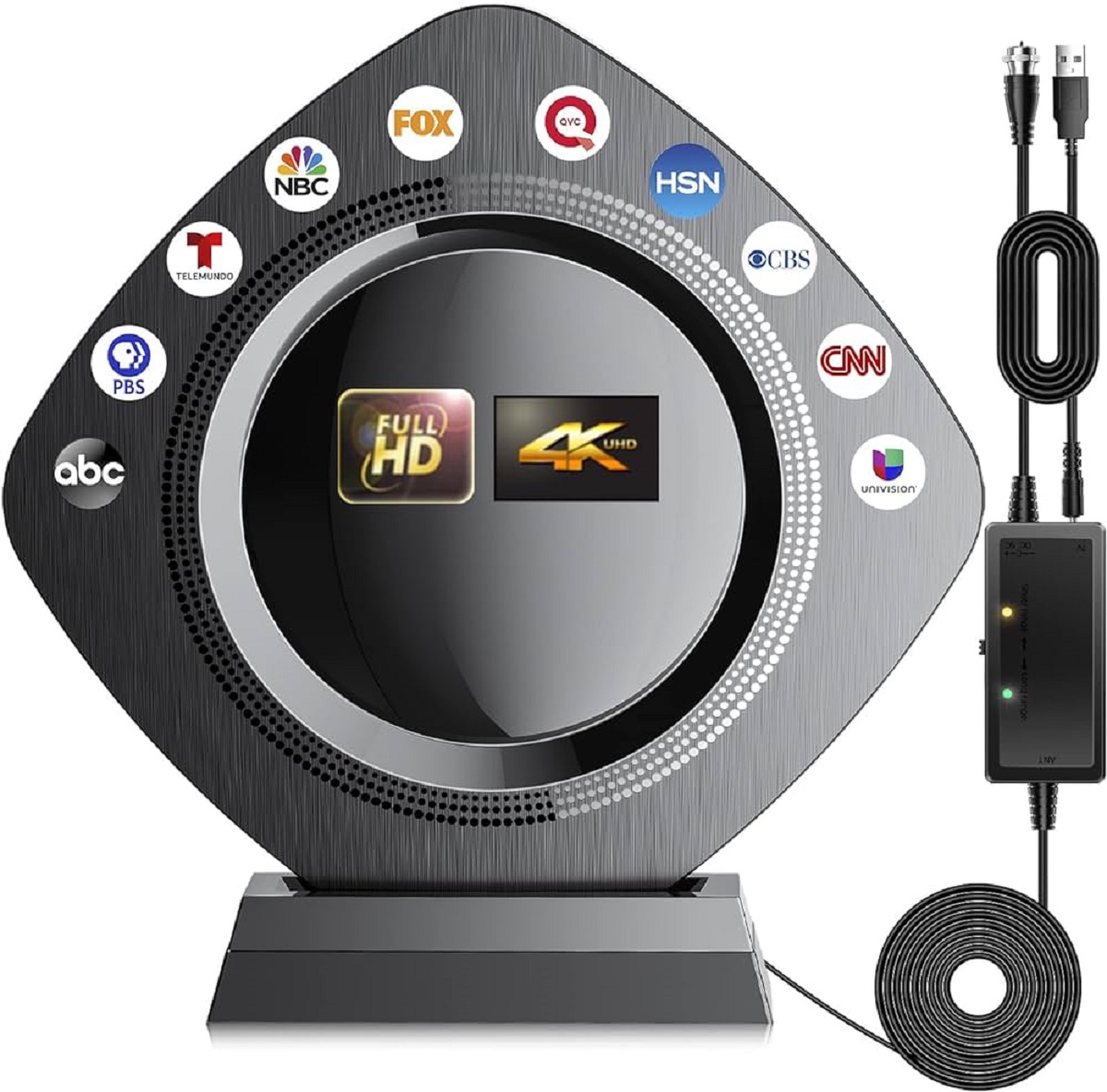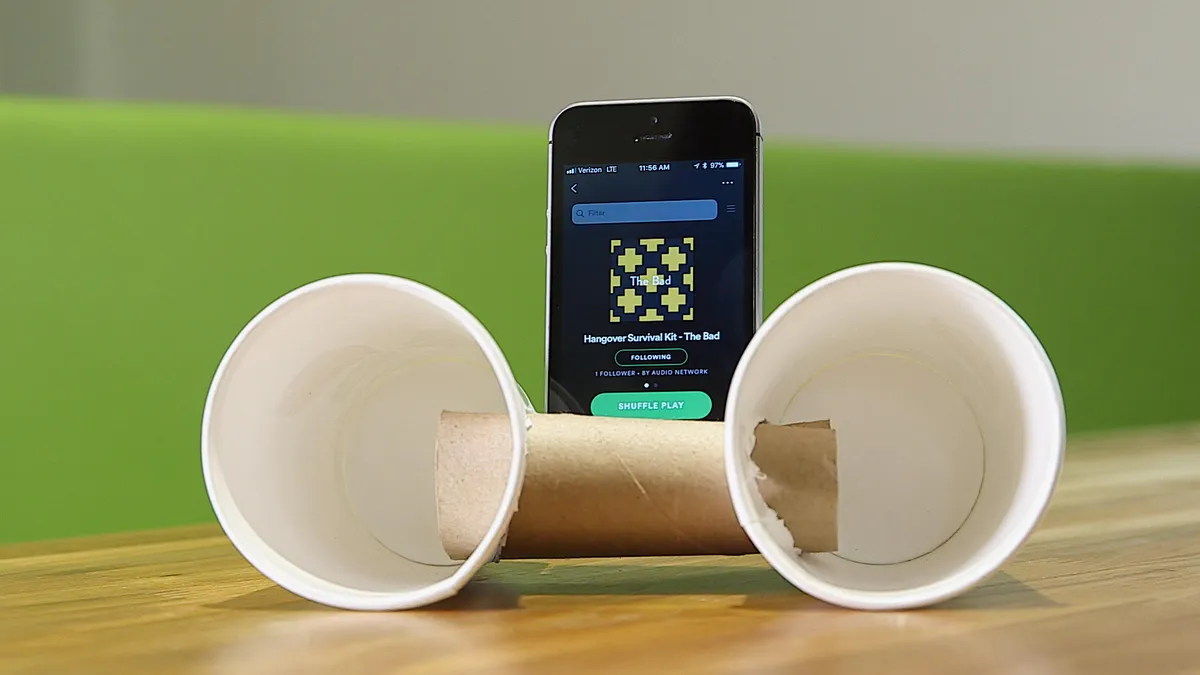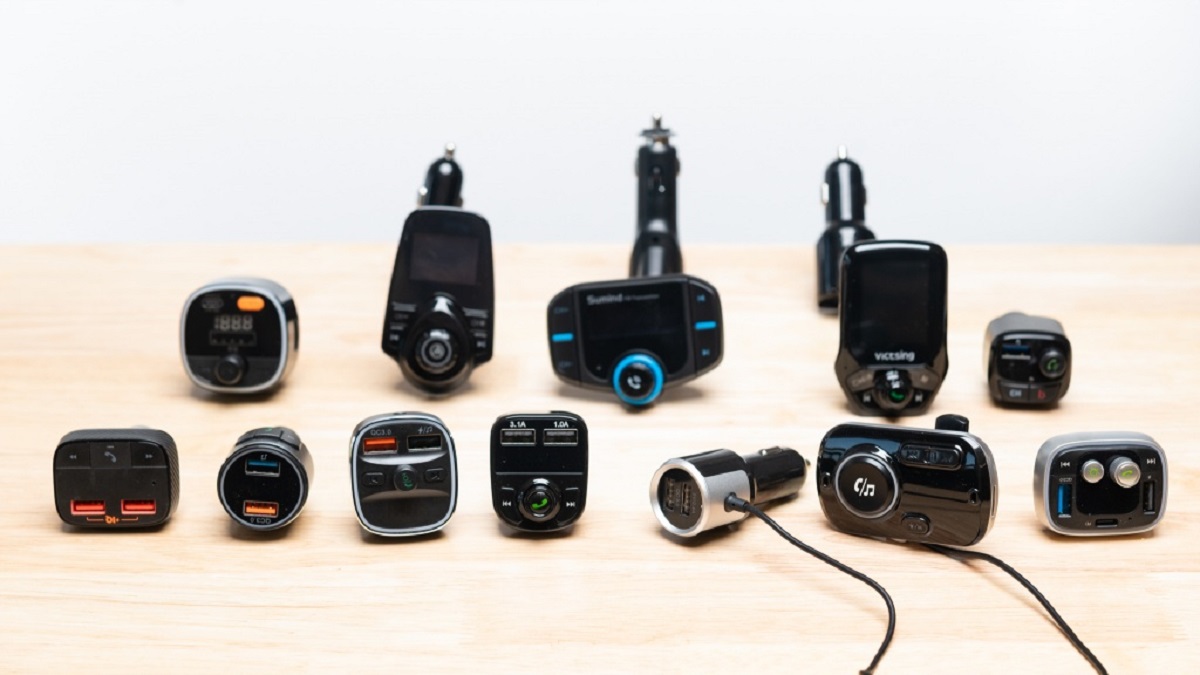Introduction
Welcome to our comprehensive guide on how to boost Bluetooth signal strength. Bluetooth technology has become an integral part of our daily lives, allowing us to seamlessly connect and transfer data between various devices. However, weak Bluetooth signals can cause frustration and hinder the performance of our devices. Whether it’s a choppy audio connection on your wireless headphones or a sluggish file transfer between your smartphone and laptop, a weak Bluetooth signal can be a major annoyance.
Understanding how Bluetooth signal strength works is essential in finding ways to boost it effectively. Bluetooth signals operate on radio waves, which can be susceptible to interference from various sources. Factors such as distance, obstructions, and interference from other devices can all impact the strength and stability of your Bluetooth connection.
Fortunately, there are several tips and techniques that can help you improve your Bluetooth signal strength. In this guide, we will walk you through each method, providing you with practical steps to enhance the performance of your Bluetooth devices. From simple adjustments to more advanced troubleshooting, you’ll gain the knowledge and tools to optimize your Bluetooth experience.
Keep in mind that the methods discussed in this guide are applicable to a wide range of Bluetooth devices, including headphones, speakers, keyboards, mice, and other gadgets. So, whether you’re trying to stream music without interruptions, play games with minimal lag, or simply improve the reliability of your Bluetooth connections, read on to discover how to boost your Bluetooth signal strength.
Understanding Bluetooth Signal Strength
Before we delve into the methods for boosting Bluetooth signal strength, it’s important to have a basic understanding of how Bluetooth signals work. Bluetooth technology uses radio waves to transmit and receive data over short distances. These radio waves operate within the 2.4 GHz frequency range and are subject to interference from various sources.
Bluetooth signal strength is measured in decibels (dBm) and typically ranges from -100 dBm to -20 dBm. The closer the signal strength is to 0 dBm, the stronger the signal. A weak Bluetooth signal can lead to issues such as audio dropouts, slow data transfers, and reduced range.
Several factors can affect Bluetooth signal strength, including:
- Distance: Bluetooth signals have a limited range, typically around 30 feet or 10 meters. As you move further away from the Bluetooth device, signal strength decreases.
- Obstructions: Physical objects such as walls, furniture, and even your own body can obstruct Bluetooth signals, causing signal degradation.
- Interference: Other electronic devices operating within the same frequency range, such as Wi-Fi routers, cordless phones, and microwaves, can cause interference with Bluetooth signals.
Understanding these factors can help you identify potential sources of signal interference and take appropriate steps to mitigate them. By addressing these factors, you can significantly improve the strength and stability of your Bluetooth connections.
It’s important to note that different Bluetooth devices may have slightly different signal strengths and ranges. Keeping this in mind, let’s explore some practical tips to boost Bluetooth signal strength for optimal performance.
Tips to Boost Bluetooth Signal Strength
Now that we understand the basics of Bluetooth signal strength, let’s explore some effective tips to boost it. These tips will help you optimize your Bluetooth connections and overcome common issues such as weak signal, intermittent connectivity, and audio dropouts. Here are seven tips to enhance your Bluetooth signal strength:
- Keep Your Devices Close: Keep your Bluetooth devices as close to each other as possible. The closer the devices are, the stronger the signal will be. Avoid keeping too much distance between your device and the Bluetooth source.
- Remove Interference: Identify and remove any potential sources of interference, such as other electronic devices or physical obstructions, that may be blocking or interfering with the Bluetooth signal. Moving away from such interference can help improve signal quality.
- Update Firmware and Drivers: Ensure that your Bluetooth devices have the latest firmware updates and drivers installed. Manufacturers often release updates that can improve Bluetooth performance and address any existing connectivity issues.
- Optimize Device Placement: Try different placements for your Bluetooth devices to find the optimal position that provides the strongest signal. Experiment with different angles and heights to maximize signal strength and minimize obstructions.
- Check for Signal Interruptions: Keep an eye out for any potential objects or physical barriers that may be interrupting the Bluetooth signal. Avoid placing your devices near metal objects or dense structures that could block the signal.
- Reduce Wireless Interference: Disable or move away from other wireless devices operating in the same frequency range as Bluetooth, such as Wi-Fi routers and cordless phones. This can help minimize signal interference and improve overall Bluetooth performance.
- Adjust Bluetooth Settings: Some devices may allow you to adjust Bluetooth settings like power output or codec selection. Experiment with different settings to find the optimal configuration that provides the best Bluetooth signal strength for your specific devices.
By implementing these tips, you can significantly boost the Bluetooth signal strength and enjoy a more reliable and seamless wireless experience. Remember that these tips may require some trial and error to find the best settings and configurations for your specific devices.
Now that we’ve covered the tips to boost Bluetooth signal strength, it’s time to put them into action. Follow these suggestions to enhance your Bluetooth connections and overcome any signal-related issues that you may be experiencing.
Keep Your Devices Close
When it comes to improving Bluetooth signal strength, proximity is key. Keeping your Bluetooth devices close to each other can greatly enhance the strength and stability of the signal. The closer the devices are, the stronger the signal will be, resulting in better overall performance.
As Bluetooth signals have a limited range, typically around 30 feet or 10 meters, it’s important to avoid unnecessary distance between your devices. For example, if you’re using wireless headphones, keep your smartphone or audio source in your pocket or nearby. Similarly, if you’re using a Bluetooth keyboard or mouse, ensure that your computer is within close reach.
By keeping your devices in close proximity, you’ll minimize the distance between them and reduce the chances of signal degradation. This is particularly important when you’re in an environment where there may be interference from other devices or physical obstacles.
Keep in mind that any obstacles between your Bluetooth devices can weaken the signal. Walls, furniture, and even your own body can obstruct the signal and reduce its strength. To mitigate this, try to position your devices in a way that minimizes the number of obstructions between them. For example, place your Bluetooth speaker in a clear line of sight with your smartphone, avoiding any potential barriers that can weaken the signal.
In addition to minimizing physical obstructions, it’s worth noting that different materials have varying effects on Bluetooth signals. For instance, metal objects can be particularly problematic, as they tend to block or reflect Bluetooth signals. If you’re experiencing signal issues, try to avoid placing your devices near metal surfaces or objects that can interfere with the signal.
Overall, the key to keeping your devices close is to maintain a strong and direct connection between them. By doing so, you’ll maximize the Bluetooth signal strength, resulting in better performance and fewer connectivity issues.
Remove Interference
Interference from other electronic devices or physical obstructions can significantly weaken Bluetooth signals. To boost your Bluetooth signal strength, it’s important to identify and remove any sources of interference that may be hindering the connection.
Electronic devices such as Wi-Fi routers, cordless phones, and microwaves operate on similar frequencies as Bluetooth, leading to potential interference. When these devices are in close proximity to your Bluetooth devices, they can disrupt the Bluetooth signal and cause connectivity issues.
To minimize interference, try moving away from any nearby devices that may be operating within the same frequency range. For example, if you notice that your Bluetooth headphones are experiencing poor signal quality when you’re close to your Wi-Fi router, try moving further away to reduce interference. Similarly, if you’re using a Bluetooth keyboard or mouse, ensure that they are not placed near other wireless devices that may be causing interference.
In addition to electronic devices, physical obstructions can also obstruct Bluetooth signals. Walls, doors, furniture, and even your own body can interfere with the signal and weaken its strength. To mitigate this, position your Bluetooth devices in a way that minimizes the number of physical barriers between them. This can help ensure a clearer and stronger Bluetooth signal.
Another potential source of interference is electromagnetic radiation. While this is not a common issue, it’s worth considering if you’re experiencing persistent Bluetooth signal problems. Devices such as power lines, electrical transformers, and large electrical appliances can emit electromagnetic radiation that can interfere with Bluetooth signals. If you suspect this to be the cause, try moving your Bluetooth devices to a different area or room to see if it improves the signal strength.
By removing sources of interference, whether they are electronic devices or physical obstacles, you can enhance the Bluetooth signal strength and improve overall connectivity. It’s always a good idea to experiment with different device placements to find the optimal configuration that minimizes interference and maximizes signal strength.
Update Firmware and Drivers
Keeping your Bluetooth devices up to date with the latest firmware and drivers is crucial for optimizing Bluetooth signal strength. Manufacturers often release updates that address connectivity issues, enhance performance, and improve overall Bluetooth functionality.
Firmware refers to the embedded software that runs on your Bluetooth devices. It controls how the device operates and communicates with other devices. Manufacturers periodically release firmware updates to fix bugs, improve compatibility, and introduce new features. These updates can also include optimizations specifically aimed at enhancing Bluetooth signal strength and stability.
Drivers, on the other hand, are software components that allow your computer’s operating system to communicate with your Bluetooth devices. Outdated or incompatible drivers can result in connection problems or limited functionality. Updating your drivers ensures that your computer and Bluetooth devices work together seamlessly, leading to better Bluetooth performance.
To update the firmware on your Bluetooth devices, visit the manufacturer’s website and look for any available updates specifically for your device model. Manufacturers often provide instructions or software tools to assist with the firmware update process. Follow the provided guidelines carefully to ensure a successful update.
Updating device drivers is typically done through the operating system. On Windows, you can use the Device Manager to check for and install driver updates. On macOS, you can use the App Store or visit the manufacturer’s website to find the latest driver versions for your Bluetooth devices.
Regularly checking for firmware and driver updates and keeping your Bluetooth devices up to date ensures that you have the latest improvements and optimizations. This can have a direct impact on the Bluetooth signal strength, enhancing connectivity and reducing potential issues.
It’s worth noting that some Bluetooth devices may have dedicated software or companion apps provided by the manufacturer. These apps may include additional features, settings, or update functionality. Be sure to explore such options to make the most of your Bluetooth devices and enhance your overall Bluetooth experience.
By prioritizing firmware and driver updates, you can maximize the performance of your Bluetooth devices and optimize the signal strength for a seamless and reliable wireless connection.
Optimize Device Placement
The placement of your Bluetooth devices can have a significant impact on signal strength and overall performance. By optimizing the placement of your devices, you can maximize the Bluetooth signal strength and minimize potential obstructions that may affect the connection.
When positioning your Bluetooth devices, consider the following tips:
- Line of Sight: Maintain a clear line of sight between your devices whenever possible. This means avoiding any physical obstructions, such as walls or furniture, that may obstruct the Bluetooth signal. Placing your devices in direct sight of each other can significantly improve signal strength, especially for devices with non-directional antennas.
- Avoid Metal Objects: Metal objects can interfere with Bluetooth signals, causing signal degradation. Keep your devices away from metal surfaces or objects that can block or reflect the signal. If you notice poor signal quality, relocate your devices to a different area, away from any metallic obstructions.
- Experiment with Angles: Try different angles for your Bluetooth devices to find the optimal position that provides the strongest signal. Sometimes, simply adjusting the placement or orientation of a device can have a noticeable impact on signal strength. Experiment with different angles and orientations to achieve the best results.
- Consider Height: Place your Bluetooth devices at an appropriate height to maximize signal transmission. Elevating your devices, such as placing them on a higher shelf or desk, can help overcome potential signal interference caused by obstructions on the ground.
It’s important to note that the specific layout of your environment may also affect Bluetooth signal strength. Different materials absorb or reflect radio waves to varying degrees, potentially impacting the strength and range of Bluetooth signals. If you’re experiencing poor signal quality consistently in a certain area, evaluate the materials and objects present in that space to identify potential signal-blocking elements.
Optimizing device placement may require some trial and error. Experiment with different configurations and locations, closely monitoring the signal strength and performance of your Bluetooth devices. By finding the ideal placement, you can ensure a robust and reliable Bluetooth connection.
Remember, every Bluetooth device may have slightly different antenna designs and signal propagation characteristics. As such, the optimal placement for one device may not apply to another. It’s important to assess the unique requirements and limitations of each device to determine the most effective placement strategy.
By implementing these placement optimizations, you can maximize Bluetooth signal strength and enjoy consistent, high-quality connections between your devices.
Check for Signal Interruptions
If you’re experiencing weak or intermittent Bluetooth signal, there may be signal interruptions causing the problem. Identifying and addressing these interruptions can help improve Bluetooth signal strength and stability.
Here are a few steps you can take to check for and mitigate signal interruptions:
- Observe the Environment: Take note of any potential objects or physical barriers that may be obstructing the Bluetooth signal. Walls, doors, and even large furniture items can weaken the signal strength. To improve signal quality, ensure that there are no major obstacles between your Bluetooth devices.
- Change the Position: Experiment with different device positions to find the optimal location that provides the strongest signal. Sometimes, even a small adjustment can make a significant difference in signal quality. Move your devices around, especially in areas prone to signal interruptions, and monitor the signal strength to find the best placement.
- Check for Microwave Interference: Microwaves operate on similar frequencies as Bluetooth, and their operation can cause temporary signal disruptions. If you’re experiencing frequent signal drops or interruptions, try moving your Bluetooth devices away from the microwave or use them in areas further away from the kitchen.
- Minimize Bluetooth Range: Bluetooth devices are designed to operate within a specific range. If you’re facing signal interruptions at the edge of the Bluetooth range, try reducing the distance between devices. Keeping them in closer proximity can significantly improve signal strength and reduce the likelihood of signal interruptions.
- Consider Signal Boosters: In some cases, using signal boosters or range extenders can help overcome signal interruptions. These devices amplify and extend the Bluetooth signal, allowing for a more robust and reliable connection. Consult with the manufacturer or explore reputable options in the market if you need to extend the Bluetooth range in your specific setup.
By checking for signal interruptions and taking appropriate measures to mitigate them, you can enhance Bluetooth signal strength and enjoy a more reliable connection between your devices. Keep in mind that optimizing the signal may require some experimentation and adjustments to find the best configuration for your specific environment.
Regularly monitoring the signal strength and addressing any observed interruptions will help you maintain a stable Bluetooth connection. By doing so, you can ensure seamless communication and a better overall user experience with your Bluetooth devices.
Reduce Wireless Interference
Wireless interference from other devices operating in the same frequency range can weaken Bluetooth signals and negatively impact signal strength. To boost Bluetooth performance, it’s important to identify and reduce potential sources of wireless interference.
Here are several steps you can take to minimize wireless interference:
- Move Away from Wi-Fi Routers: Wi-Fi routers often operate in the same 2.4 GHz frequency range as Bluetooth. If you’re experiencing poor Bluetooth signal quality, try moving away from your Wi-Fi router or positioning your Bluetooth devices farther away from it. This can help reduce interference from Wi-Fi signals and improve overall Bluetooth performance.
- Turn Off Unused Wireless Devices: Other wireless devices in your vicinity, such as cordless phones or baby monitors, can also operate on the 2.4 GHz frequency band and potentially interfere with Bluetooth signals. Turning off or relocating these devices away from your Bluetooth devices can minimize interference and enhance signal strength.
- Change Wi-Fi Channel: If you’re experiencing significant interference between your Wi-Fi and Bluetooth devices, consider changing the Wi-Fi channel. By selecting a less crowded channel, you can reduce the chances of interference and improve Bluetooth signal quality. Consult your Wi-Fi router’s user manual or contact the manufacturer for guidance on changing the Wi-Fi channel settings.
- Use Bluetooth 5.0 or Higher: Bluetooth 5.0 introduced a feature called “Adaptive Frequency Hopping” (AFH) that helps reduce interference from nearby wireless devices. Devices running on Bluetooth 5.0 or higher have improved capabilities to dynamically avoid crowded frequency bands, resulting in better overall signal quality.
- Reposition Bluetooth Antennas: Some Bluetooth devices have external antennas that can be rotated or repositioned. Experiment with adjusting the antenna’s position to find the orientation that provides the best signal strength and minimizes interference from other wireless devices.
Reducing wireless interference is essential for optimizing Bluetooth signal strength and minimizing connectivity issues. By following these steps and minimizing the presence of other devices operating in the same frequency range, you can significantly enhance the performance and reliability of your Bluetooth connections.
It’s also worth noting that selecting devices with advanced Bluetooth technologies, such as Bluetooth Low Energy (BLE), can offer better signal quality and reduced interference susceptibility.
Regularly monitor the signal strength of your Bluetooth devices, especially in areas with potential wireless interference, to ensure optimal performance. By being mindful of wireless interference and taking appropriate steps to minimize it, you can enjoy strong and uninterrupted Bluetooth signals for seamless wireless communication.
Adjust Bluetooth Settings
Adjusting the settings on your Bluetooth devices can help optimize signal strength and improve overall Bluetooth performance. By making certain adjustments and configurations, you can enhance the connection and minimize any potential issues.
Here are some settings you can consider tweaking:
- Power Output: Some Bluetooth devices allow you to adjust the power output of the Bluetooth radio. By increasing the power output, you can potentially extend the range and improve signal strength. However, keep in mind that higher power output may also consume more battery. Experiment with different power settings to find the optimal balance between signal strength and battery life.
- Codec Selection: Some Bluetooth devices, especially audio-related ones, support different audio codecs. These codecs determine how audio data is compressed and transmitted between devices. Experimenting with different codecs supported by your devices can help you find the one that offers the best audio quality and signal reliability.
- Connectivity Prioritization: In situations where you have multiple Bluetooth devices trying to connect to one source device, you can prioritize the connectivity of specific devices. This can be especially helpful when one device requires a more stable connection, such as a wireless headset for calls or a gaming controller. Prioritizing the essential devices can improve their signal strength and minimize interference with other less critical devices.
- Change Device Name: Renaming your Bluetooth device can help avoid confusion and potential connection issues when multiple devices are in range. Choose a unique and easily recognizable name for your device to ensure a smoother and more accurate connection process.
- Disable Unnecessary Features: Bluetooth devices often come with additional features that may not be essential to your specific use case. Disabling unnecessary features, such as auto-pairing or multi-point connections, can help reduce the complexity of the Bluetooth connection and potentially improve signal strength.
Keep in mind that the availability and options of these settings may vary depending on your Bluetooth devices and their accompanying software or apps. Refer to the user manual or contact the manufacturer for specific instructions on adjusting the Bluetooth settings.
Experiment with different settings to find the configuration that provides the best signal strength and performance for your specific devices and use cases. It’s important to note that what works well for one device may not work optimally for another, so it may take some trial and error to find the optimal settings.
By fine-tuning the Bluetooth settings and customizing them to your needs, you can maximize signal strength, improve overall performance, and enjoy a more seamless and reliable wireless experience with your Bluetooth devices.
Conclusion
Boosting Bluetooth signal strength is essential for optimizing the performance of your Bluetooth devices. Weak or intermittent Bluetooth signals can result in poor audio quality, slow file transfers, and unreliable connections. By implementing the tips outlined in this guide, you can significantly enhance your Bluetooth signal strength and enjoy a seamless wireless experience.
Throughout this guide, we’ve covered various methods to boost Bluetooth signal strength, including keeping your devices close, removing interference, updating firmware and drivers, optimizing device placement, checking for signal interruptions, reducing wireless interference, and adjusting Bluetooth settings.
Remember that every Bluetooth setup is unique, and what works for one person may not work the same for another. It’s important to experiment with different techniques and settings to find the best configuration for your specific devices and environment. A combination of these methods might be necessary to achieve the desired results.
Regularly monitor the signal strength and performance of your Bluetooth devices and make adjustments as needed. Keep in mind that some improvements may require patience and trial and error.
By following these tips, you can enhance Bluetooth signal strength, improve connectivity, and enjoy a more reliable and seamless wireless experience with your Bluetooth devices.
Now that you have the knowledge and tools to boost Bluetooth signal strength, go ahead and apply these tips to enhance the performance of your Bluetooth devices. Say goodbye to weak signals and enjoy uninterrupted audio, fast file transfers, and a strong and stable Bluetooth connection.







